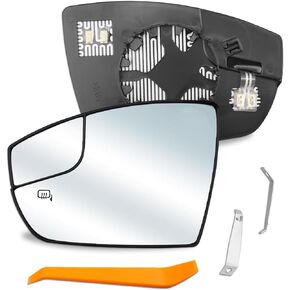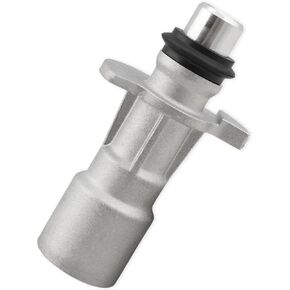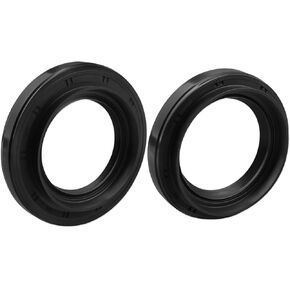- Shopping, made easy.
- /
- Get the app!
Rear axle shock pads, often referred to simply as shock absorbers, play an important role in a vehicle's suspension system. Here's a closer look at their purpose and how they work:
Function:
Impact Absorption: The primary function of rear axle shock pads is to absorb and attenuate shocks or vibrations that occur when the suspension reaches maximum compression. This occurs when the suspension system, especially the rear axle, is subjected to sudden jolts, bumps, or uneven road surfaces.
Prevents Bottoming Out: Shock pads prevent the suspension from completely bottoming out. Bottoming out occurs when the suspension is fully compressed, causing metal parts of the suspension to come into direct contact with each other or with the vehicle's frame. This can result in damage to suspension components and poor ride quality.
Protects Components: By absorbing shocks and preventing bottoming out, shock pads also help protect other critical components of the suspension system, such as shock absorbers, springs, and mounts, from excessive wear and potential damage. Operation:
Location: Rear axle shock pads are typically mounted to the chassis or frame of the vehicle, strategically placed where they come into contact with the axle or suspension components when the suspension is fully compressed.
Importance:
Ride Quality: Properly functioning shock pads help prevent severe impacts from being transmitted to the vehicle's chassis and occupants, resulting in a smoother, more comfortable ride.
Safety: They also play a role in maintaining vehicle stability and control, especially during sudden maneuvers or when traveling over rough terrain.
In summary, rear axle shock pads are a critical component of the suspension system, helping to control impacts and protect various suspension components from damage, helping to improve ride comfort and vehicle durability.
 -14%
Driver Side Mirror Glass Fit for Ford C-Max 2013-2018,for Escape 2013-2016,Left Heated Mirrors with Rear Holder CJ5Z17K707G
KWD 9
-14%
Driver Side Mirror Glass Fit for Ford C-Max 2013-2018,for Escape 2013-2016,Left Heated Mirrors with Rear Holder CJ5Z17K707G
KWD 9
 Transmission Range Sensor Neutral Safety Switch Fit for Honda Civic 2006-2015,for Accord EX 2007-2012
KWD 10
Transmission Range Sensor Neutral Safety Switch Fit for Honda Civic 2006-2015,for Accord EX 2007-2012
KWD 10
 Aluminum Engine Oil Cooler Inlet Connector Upgrade Metal Pipe Fit for Land Rover Sport LR4 Range Rove,Replace LR030593 C2Z18658 LR028136 LR011997
KWD 6.500
Aluminum Engine Oil Cooler Inlet Connector Upgrade Metal Pipe Fit for Land Rover Sport LR4 Range Rove,Replace LR030593 C2Z18658 LR028136 LR011997
KWD 6.500
 Front Drive Axel Shaft Output Oil Seal Fit for Toyota 4Runner Sequoia Tundra Tacoma Lexus GX460 LX570 GX460 Replace 90311-47013 90311-47027 Oil Seal for Differential Side Gear Shaft
KWD 8
Front Drive Axel Shaft Output Oil Seal Fit for Toyota 4Runner Sequoia Tundra Tacoma Lexus GX460 LX570 GX460 Replace 90311-47013 90311-47027 Oil Seal for Differential Side Gear Shaft
KWD 8